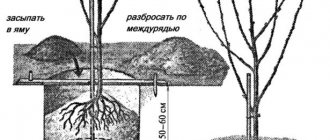Need for shelter
Ericaceous eucarycotas are fastidious plants, therefore, in addition to creating optimal growing conditions, the crop needs proper shelter for the winter. Otherwise, the rhododendron root system, located close to the soil surface, will partially or completely freeze out. Fragmentarily frozen roots will subsequently cause the development of diseases and the fall of established buds.
The heather genus unites more than five hundred subspecies of evergreen, deciduous and semi-deciduous tree-like shrubs. Many species are frost-resistant and grow naturally in northern regions and do not require shelter. However, most modern varieties and hybrids cannot withstand frosts of -20 degrees and die. Therefore, many flower lovers are concerned about the question of whether it is necessary to cover rhododendrons for the winter.
Diseases and pests
Caterpillars and slugs are usually controlled by mechanical removal. If plants suffer from the activity of aphids, scale insects, mites and weevils, then insecticides must be used.
Most often, rhododendrons suffer from spotting or are affected by rot. In the first case, fungicides should be used. If the plant begins to rot, it is usually destroyed.
If you choose the right variety and carefully care for the plant, you can grow lush, beautiful homemade rhododendrons even in the cold Ural climate. Although agricultural technology has some peculiarities, in any case, if the rules are followed, the shrub will be able to please its owners with abundant flowering.
Shelter dates
Summer residents who have no experience in growing this crop are interested in what sub-zero temperature the plants should be covered at. Almost all varieties and hybrids tolerate frosts well from -8 to -12 degrees. However, at a stable temperature of -12-15 degrees, you should immediately take care of reliably covering the root system of your pets. This is especially true for young seedlings that are less than three years old.
If the temperature indicators are not stable and differ, then increasing or decreasing the mercury column, it is worth holding off on covering the plants. Premature covering of flower buds laid in the fall in this case can lead to their destruction. Also, as a result of a long stay under the covering material at temperatures above minus 5 degrees, the root collar of the plant will become affected by mold.
The established deadlines for covering rhododendrons, depending on the region, begin at the end of October and end until mid-December.
In outskirts of Moscow
In the Moscow region, flower growers cover rhododendrons for the winter at an established, stable temperature of -8 to -12 degrees. To get good lush flowering of the shrub in May, you need to cover the crop starting from mid-November. The most reliable shelter for young seedlings is air-dry, using heat-retaining and waterproof materials. Such shelters will prevent both freezing and damping off of the root system and flower buds.
In the middle lane
Experienced flower growers note that the period of shelter for rhododendrons directly depends on the condition and age of the shrub. As a rule, in the middle zone the procedure is carried out from late October to early December. There is no need to rush to cover ornamental crops in the regions of the Middle Zone, because the first autumn frosts are beneficial for garden azaleas. They stimulate the passage of chemical and biological processes that increase plant immunity. The main thing is to insulate the bushes before the air temperature drops below -15 degrees.
On a note!
Every centimeter of snow in winter negates one degree of sub-zero temperature. With a snow cover height of 30-40 cm, the soil temperature on the surface itself is 0 - +1 degrees. In this case, even rhododendrons that have not been insulated since the fall will not suffer from severe frost. However, in a snowless winter when the temperature drops from -26 to -30 degrees without shelter, almost all flower buds will be damaged.
In the Urals
Light autumn frosts in the Ural region are easily tolerated by garden azaleas, making the plant more hardy. However, starting from the end of October, rhododendrons should be covered for the winter. The procedure should be carried out when the night air temperature drops to -12 degrees.
In Siberia
It is worth preparing rhododendrons in this region from the beginning of frost. To prevent young bushes from freezing, cover the plants from the last week of September, ending in early November. When insulating shrubs, make sure that the protective material will not only protect against frost damage, but will also prevent flower buds and root collars from rotting.
In the Leningrad region
Take special care of young bushes of hybrid forms of rhododendron that are not resistant to severe frosts. The St. Petersburg region is characterized by early and sharp cold snaps, so even the most frost-resistant first-year seedlings can suffer from low temperatures if they are not covered in time.
The surface root system of the plant is most vulnerable, so it will need warm and serious shelter. When the soil freezes to -5 degrees, the root collar of a young rhododendron is on the verge of freezing, which means the entire plant is at risk. It is necessary to insulate shrubs in the Leningrad region from mid-September.
When to cover rhododendron for the winter. How to cover evergreen rhododendrons for the winter?
The luxurious bloom of rhododendrons in the spring garden leaves no one indifferent. But rhododendron lays flower buds in the fall, so in order for it to bloom profusely in the spring, these buds should not suffer during the winter.
Unfortunately, the climatic conditions of most of our country are not suitable for trouble-free overwintering of rhododendrons. And if the plants themselves are quite frost-resistant, the same cannot be said about flower buds - they are easily damaged by frosty, drying winds.
This is why rhododendrons, especially evergreens, most often need winter shelter.
The best shelter for almost any plant is natural snow cover. Therefore, if your rhododendrons are small, and the winters in your area are always snowy, you can leave everything as it is - they will winter well under the snow.
If winters in your region are replete with thaws, sun, and winds, it’s time to prepare a winter shelter for rhododendrons.
Our task is to preserve flower buds, protecting them from winter drying. Therefore, we need the shelter to be “breathable”, but at the same time the wind and sun cannot reach our plant. For very young plants, a cardboard box, or even an upside-down bucket, is suitable. The main thing is that the walls of the shelter do not touch the branches.
If the plant is already quite large, you will have to make a frame, either from boards, or, which is much simpler, from arcs, plastic or metal; usually any gardener/gardener/summer resident has plenty of this stuff. What if you don’t make a frame, but simply wrap the rhododendron with agrofibre or put a cap made of covering material on it? In this case, the snow, with slight thaws, having slightly melted and become heavier, can break the plant, and, first of all, the flower buds will suffer.
We make the frame “with a margin” so that there is a layer of air between the covering material and the plant. We fasten the arcs with wire, cable ties, etc.
Cover with agrofibre with a density of 60 in two layers (more is possible). There is no need to cover it with film - there is a high risk of damping out.
Autumn watering is required
Since evergreen rhododendrons, like conifers, suffer in winter not from freezing, but from drying out, moisture-recharging watering is very important for them; the plant must literally “get drunk for future use.”
Mulch the tree trunk circle
Pine bark, pine needles, acidic peat, or just a thick layer of fallen leaves - anything is suitable. This will protect the root system from freezing too early.
The trunk circle of this baby is protected by dry hydrangea inflorescences
Treat before covering
Plants that show signs of fungal diseases may not come out of winter; the sheltered environment may be too comfortable for pathogens. You can use systemic fungicides - “topaz”, “skor”, “strobe”, and also combine a fungicide + insecticide in one tank mixture. You can treat rhododendrons at the same time as conifers; the concentrations of the drugs for them are the same.
Rhododendrons droop and curl their leaves in winter (photo from the Internet)
When to cover?
There is no point in covering rhododendrons too early; they must undergo the necessary “hardening” and “understand” that winter has come. It is better to install the arcs in advance, while the ground is not yet frozen. You can also tighten the cover without waiting for frost, but in this case, leave one side open and watch the plant. When the leaves curl and droop (evergreen rhododendrons thus protect their leaves from drying out by frost), then you can close them completely. Covering it earlier means exposing the plant to the risk of damping off, because while the leaves continue to evaporate moisture, a greenhouse effect is created under the cover.
Preparing the plant
The timing of covering shrubs depends on the characteristics of the variety or hybrid. Before covering rhododendrons for the winter, it is worth carrying out several preparatory techniques that will help dicotyledonous eukaryotes survive the cold.
Top dressing
The plant needs to replenish its supply of minerals even at the end of the season. The process of ontogenesis of the embryonic shoot of rhododendron begins to occur from mid-August to the end of September. In order for the shrub to enjoy lush flowering in the spring after wintering, elements important for growth and photosynthesis must be present in the root zone of the plant until the temperature drops significantly. Only when the plant absorbs all the substances necessary for growth in the fall does it enter a resting phase, reducing the rate of metabolic processes.
In order for all the processes necessary for entering the dormant phase to be completed on time, autumn fertilizing should not contain nitrogen compounds that stimulate plant growth. In late autumn, when frost sets in, granular fertilizers can be poured into the root zone of the bush:
- superphosphate – 25 g;
- potassium sulfate – 25 g;
- urea – 15 g.
During the winter, granular substances will gradually dissolve, and with the onset of spring warmth they will be absorbed by the root system of the plant.
On a note!
Garden azalea feels very good when the root zone is mulched in autumn with natural materials that acidify the soil. The role of mulch can be performed by: pine, spruce, thuja or juniper needles. And also just wood shavings mixed with a small amount of citric acid.
Trimming
The plant does not particularly need formative shortening of branches, since at the genetic level it is programmed to grow a symmetrical bush shape. Therefore, before the start of winter, garden azaleas should only be cut out of diseased and damaged branches. The only reason for shortening the bush is its rejuvenation. The procedure is carried out in case of loss of decorativeness and lush flowering of rhododendron.
In the fall, before the onset of frost, the shoots of the crop are cut 5 cm above the level of dormant buds. After pruning, in 10-12 days the dormant buds will begin to grow, and next season the decorativeness of the garden azalea will be restored. To prevent infection, immediately sprinkle the cut areas with wood ash or lubricate them with brilliant green.
Treatment against diseases and pests
Rhododendrons, like all plants, have their own diseases and insect pests that can cause irreparable harm to the plant. Instability to pathogens and insect parasites depends on the type and variety of the plant. So, for example, evergreen varieties that grow in the sun are more susceptible to infections and pest attacks than those planted under the canopy of trees. Exhausted plants are most susceptible to diseases, so throughout the entire season, rhododendrons need to create optimal conditions for development.
Before wintering begins at the end of September and beginning of October, it is worth spraying the plants with growth stimulants that will increase their immunity: Epin, Heteroauxin, Zircon. Before insulation with covering material to prevent rot, treat the bushes with the following preparations: Fitosporin, Maxim, Fundazin, Effect, Previkur. To destroy pest larvae overwintering on the foliage and in the soil under the plant, before insulation, spray with insecticides: Aktara, Confidor Maxi, Opperkot, Actellik.
On a note!
Some types of garden azaleas have medicinal properties. However, most varieties contain toxins that specifically act on nerve cells, affecting nerve and neuromuscular tissue. Therefore, self-medication using rhododendron raw materials is strictly prohibited!
Covering materials
Each gardener must select the most effective material for insulating shrubs individually, based on the climatic conditions of the region and capabilities.
You may be interested in:
Timing for covering roses for the winter in the Moscow region It is only beginner gardeners who think that with the onset of autumn and after harvesting, work on the site is completed.... Read more...
Lapnik
Branches of evergreen trees and shrubs are the most affordable material for covering garden azaleas. The constructed insulated hut does not get wet, creates an air gap, retains snow well and protects from severe frosts. In addition, the specific smell of spruce branches repels rodents, so this material is especially valuable when covering young bushes. Covering rhododendrons growing in sunny areas with natural material for the winter will protect the shrubs from ultraviolet burns in the spring.
Dry corn stalks
Another natural material that can be used to protect perennials from frost. However, during heavy rainfall, corn stalks should be covered with plastic.
Wood sawdust
Wood shavings well protect the surface root system of the plant from frost. However, it is not recommended to cover the bush completely. It is best to sprinkle it near the rhododendron in a layer of 20–30 cm. In case of heavy rains, cover the sawdust with polyethylene, and before pouring it into the root zone of the crop, mix it with a small amount of citric acid.
Thermal insulation flooring
Thanks to the unique properties of geosynthetics obtained by the thermal bonding method, it is possible to protect rhododendrons in northern regions. Thermal insulation materials allow moisture to pass through well, so it is recommended to stretch them under polyethylene. This “greenhouse in a greenhouse” is suitable for covering ornamental shrubs in the Leningrad region and Siberia.
Protective structures
Designed to protect plants from the cold, the structures protect shrubs from harmful UV radiation and rodents, and allow air to pass through well. Mini-greenhouses include dense agrofibre and metal arcs insulated with PVC braid. The structures are made of alloys that are resistant to corrosion and exposure to sub-zero temperatures. In such a covering, rhododendrons do not freeze out, receiving the oxygen necessary for a comfortable winter.
On a note!
Plants that have lost a large amount of moisture during the wintering period have curled leaves and drooping branches. To restore the decorative appearance of the shrub, spray the leaves every three days with a solution of growth stimulator Epin or Heteroauxin.
Wintering containers with rhododendrons
In the Moscow region and to the north, it is impossible on the street. More precisely, it is possible, provided that you create for them the same conditions as those wintering in the ground. To do this, a container with rhododendron can be dug in the garden. This will protect the roots from freezing. In a pot simply left in the garden, the rhododendron will most likely die. Wrapping the pot along with the plant in lutrasil will not help, unless the weather conditions are the same as in the winter of 2019/2020.
You can also store a container with rhododendron in a vegetable cellar. The conditions there are quite suitable for wintering, just do not forget to water the container with the wintering rhododendron occasionally.
Rhododendron can winter so beautifully in a container only in the southern regions.
Correct cover
The necessary care of rhododendron in the fall and preparation of the ornamental plant for winter depends on the individual characteristics of the crop. Evergreen and deciduous heather eukaryotes differ from each other in their resistance to frost. However, both of these subspecies need shelter for the root system.
Evergreen
Evergreen garden azaleas do not shed their foliage for the winter, which curls up when frost sets in and unfolds when spring warmth sets in. The shelter of these species differs from the variety and hybrid. The following varieties need good insulation with spruce branches or lutrasil:
- Percy Weissman;
- Gold Tracht;
- Goldflimmer;
- Grandiflorum;
- Nova Zembla;
- Naselle;
- Exbury "Fireball";
- Golden Sunset;
- Simona.
The following varieties need light covering with spruce branches, pine needles or wood shavings:
- Berry Rose;
- Alfred;
- Bieber;
- Blue Peter;
- Blue Tit;
- Bourzault;
- Gold Dust;
- Violet;
- Gessen;
- Irena Koster;
- Dagmar.
On a note!
Without any insulation for the winter, evergreen eucarycots can be left only if the plant is planted in the shade.
Deciduous
Deciduous ornamental shrubs of the heather family are easier to care for than evergreen ones. Popular varieties and hybrids of Canadian, yellow, Daurian and Japanese rhododendron can simply be insulated in the root zone with a 15–20 cm layer of pine needles, leaves, and wood shavings. However, if a deciduous garden azalea seedling is less than two to three years old, it must be covered with spruce branches or thermal insulation material.
Reproduction
Rose trees in the Urals can be propagated by cuttings, layering and seeds. Each of these methods has its own specifics and is not suitable for all varieties. For example, species growing in nature are most often propagated by seeds, and varieties and hybrids are most often propagated by cuttings and layering. Each propagation method is described in more detail below.
By cuttings
Cuttings are the most common method of propagating your favorite bush. Cuttings of evergreen varieties that take a long time to take root are cut in the spring, before the buds swell. And planting material from deciduous bushes is harvested in the summer months; after flowering ends, they take root faster.
The bush can bloom in the same year.
What to do:
- Cut the shank from a semi-lignified branch no longer than 8–10 cm. Cut with an oblique. On a summer cutting, you need to leave 2-3 leaves at the top and remove the rest.
- The lower part of the shoot must be soaked in a growth accelerator for 10–15 hours, longer if possible.
- In a pot with peat mixed with sand (3:1), deepen the lower end of the shank at an angle so that the branch almost lies. Pour and cover the container with film. You can plant the cutting vertically, then it is better to cover it with a dome made from a glass jar (plastic bottle).
- The temperature under the dome is +25°C. The soil should be slightly damp.
- In the fall, after rooting (for deciduous varieties after 1–1.5 months, for evergreen varieties - up to 5 months), transplant the sprout into a container with a more nutritious soil mixture (peat and pine needles).
- In winter, the pot with the seedling should be placed in a dark and cool place (+12°C).
- In spring, plant in open ground.
Did you know? Some major cities in the world have chosen the rose tree as their symbol. For example, the symbol of Washington is the large-leaved rhododendron, and the symbol of Vladivostok is the pointed one.
By layering
Propagating rhododendron by layering is the easiest way. To do this, in early spring, you need to select the most flexible of the lower shoots from the bush, bend them to the surface of the ground and secure them with wire. Sprinkle the branches with soil mixed with peat, leaving only the tops.
In the future, you will need to moisten the cuttings in the same way as the mother plant. In a year they will be independent bushes with their own roots.
They will need to be carefully separated from the old bush and immediately planted in the chosen place. Before next winter they will have time to take root and get stronger.
Seeds
Propagating a rose tree from seeds takes a long time and is the most difficult. Planting material should be purchased from specialized stores. You need to sow the seeds in winter, then by spring they will already germinate.
Did you know? The Japanese have long called the rose tree the “bush of temptation.” Honey made from the nectar of certain types of rhododendron contains andromedotoxin, which causes symptoms of intoxication: nausea, dizziness and hallucinations.
Sowing technology:
- Stratify the seeds for several days in the refrigerator or soak them in a solution that stimulates growth.
- Pour peat and sand into the container in a ratio of 3:1. Moisturize.
- Sow the seeds no deeper than 1.5–2 cm.
- Cover with film and place in a bright place.
- In about a month, the first shoots will appear, if during this time the film is opened daily for ventilation and watering. You will also need to wipe off the condensation.
- After 2–3 leaves appear on the seedlings, they need to be transplanted into separate containers or into a greenhouse.
- After 2 years, the seedlings will become so strong that they can be planted in open ground.
From sowing the seeds to the first flowering can take from 4 to 8 years.
Rosewood is demanding on soil and watering and needs special attention in winter. But the gardener’s labors are more than paid for by luxurious, bright flowering. Even one rhododendron bush will be a wonderful decoration for the entire garden.
Was this article helpful?
Thank you for your opinion!
You can recommend this article to your friends!
You can recommend this article to your friends!
Yes
No
Adviсe
In order to avoid mistakes when preparing rhododendrons for winter, you should follow the recommendations of experienced gardeners:
- In general, it is impossible to water rhododendrons during wintering, gradually reducing the supply of liquid from the beginning of autumn;
- You should not remove the insulating material from the bushes as soon as the snow melts. The procedure should be carried out after the soil has warmed up and there is no threat of spring temperature drops to below zero;
- When insulating shrubs, take care of flower buds and preserving apical shoots. The procedure is carried out by bending the branches to the ground. Despite their massiveness, even mature bushes tolerate this inclination well;
- check shelters throughout the winter: brush off excess snow, promptly replace wind-damaged agrofibre;
- if the plant is covered too early, the transition zone from the root to the stem will begin to rot, the foliage will become covered with mold spores, and the bush will die. To prevent rotting from occurring, open the covered garden azalea slightly from the sunny side. After keeping the bush wide open for two weeks, when a stable sub-zero temperature has been established, cover it again.
If the “pets” are properly insulated, they will survive the winter without any problems. And in the spring they will delight the owners with lush, bright flowers.











